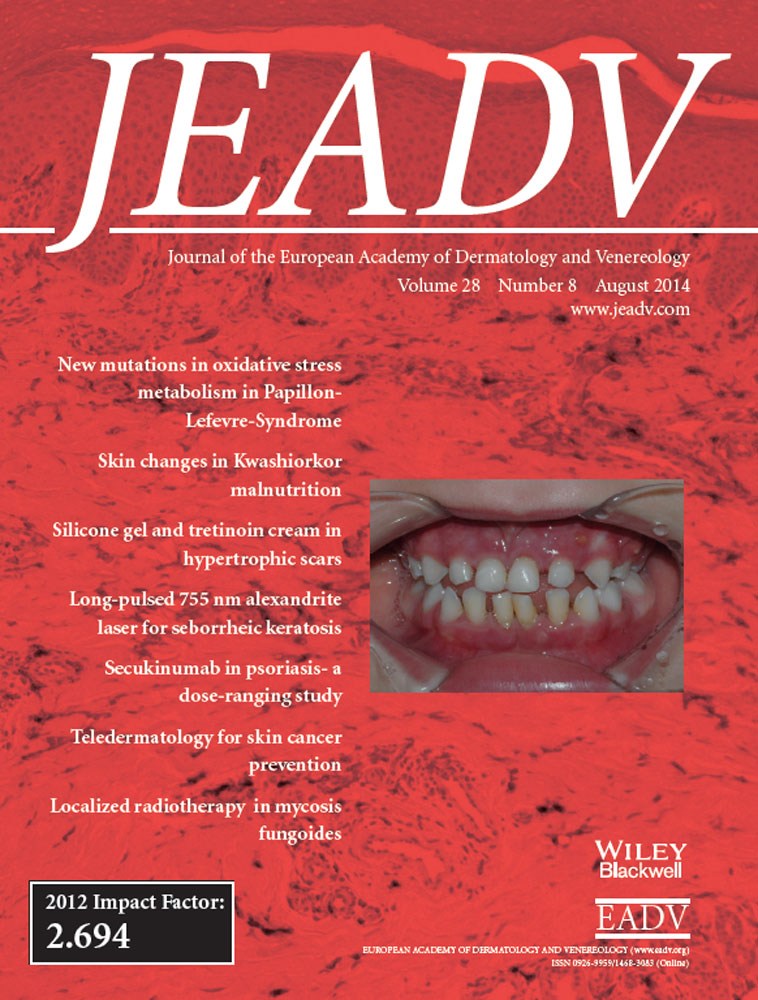The Imbalance of Th17 cells and CD4+CD25highFoxp3+ Treg cells in patients with atopic dermatitis
Conflicts of interest
None declared.Funding sources
None declared.Abstract
Background
Th17/Treg imbalance is involved in several autoimmune, inflammatory and allergic reactions. Nevertheless, the possible contribution of Th17/Treg imbalance in atopic dermatitis (AD) remains unknown.
Objective
To explore the possible role of Th17/Treg imbalance in AD.
Methods
Th17 and Treg cells percentage in peripheral blood mononuclear cells (PBMCs) and skin specimens, specific transcription factor retinoic acid-related orphan receptor (ROR)γt and Foxp3 mRNA levels in PBMCs, as well as Th17- and Treg-related cytokines mRNA levels in PBMCs, serum concentrations, and expression levels in PBMCs culture supernatant after recombinant Dermatophagoides pteronyssinus antigen stimulation were detected in AD patients. Controls included patients with psoriasis, allergic contact dermatitis (ACD) and healthy donors.
Results
Th17 cells percentage, RORγt, IL-17 and IL-23 levels in peripheral circulation of AD patients were significantly higher than those in ACD patients and healthy controls, but lower than those of psoriasis patients. Treg cells percentage, Foxp3 and TGF-β mRNA levels were reduced in AD patients compared with healthy controls, while there were no significant differences among AD, ACD and psoriasis patients. Th17 cells percentage, IL-17 and IL-23 levels were increased, while Treg cells percentage and TGF-β level were decreased in AD lesion and PBMCs culture supernatant respectively. There was a negative association between Th17 and Treg cells percentage in AD patients. AD severity score positively correlated with Th17 cells percentage and Th17/Treg ratio, while negatively correlated with Treg cells percentage. Serum IgE levels positively correlated with Th17/Treg ratio.
Conclusion
In AD, there exists an immune imbalance in Th17 and Treg cells, which may contribute to its pathogenesis and development.




